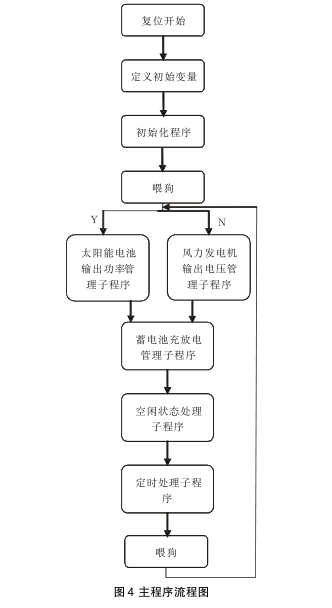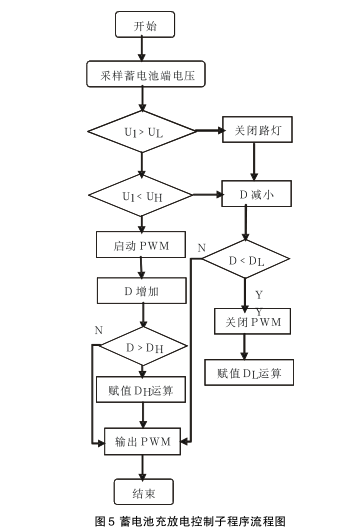Design of intelligent LED solar street light system based on wind and solar complement
Intelligent LED streetlights with wind-solar complementation are more practical and economical than traditional streetlights. . On the basis of solar street lights, combined with the advantages of complementary scenery, the author designed a new type of intelligent LED solar street light system based on wind and solar complement. The system samples the parameters of wind turbine output voltage, solar cell terminal voltage, battery voltage, ambient brightness and temperature, and then enters the ARM processor for calculation, which can achieve high and accurate control of street lamp brightness, and the battery has automatic selection function. . The street lamp system can achieve significant energy saving and emission reduction and green environmental protection effects.
1 Introduction
As a new energy source, solar energy and wind energy are both environmentally friendly and “inexhaustible” and are being widely used. LED's small size, ruggedness, long life, green ring
guarantee, high efficiency and energy saving, has gradually replaced traditional street lighting. Considering the economics, reliability and safety of street lamps, LED solar street lighting systems with wind-solar complementary [1] can be used. Although the total amount of solar radiant energy reaching the surface of the earth is large, the energy density is very low; in addition, due to the natural conditions such as day and night, season, altitude, and random factors of the weather, the solar energy reaching a certain ground is intermittent. unstable. Therefore, the use of wind and solar complementation can make up for these shortcomings of solar energy [1-2].
2 System Composition
This paper designs a smart LED solar street light system based on wind-solar complementation. The so-called intelligent wind-light complementary wind turbine and solar battery For
main, supplemented by ordinary 220V AC supplemental energy. The system of this design is mainly divided into four parts, namely: the power supply part of the street lamp system, the part of the street lamp controller, the part of the system power storage, and the output part of the street lamp. The system block diagram is shown in Figure 1.

2.1 Design of the power supply part of the street lamp system
The block diagram of the power supply part of the street lamp system is shown in Figure 2. This part mainly includes photodetectors, wind speed sensors, solar cells, wind turbines, mains power supply, and MOSFETs (switching tubes). The photodetector is used to detect the illumination intensity of the external environment, that is, whether it is day or night to adjust the system power supply type. During the daytime, the solar cell and the wind turbine charge the battery, and the LED street lamp is powered by the battery at night or when there is no wind, and the utility power is supplied when the battery is insufficiently supplied. The purpose of the wind speed sensor is to monitor the wind speed and transmit the detection signal to the control portion of the system. The choice of solar cells and wind turbines must take into account the capacity of the battery and the local weather conditions. The technical parameters that determine wind power mainly include rated wind speed, output power and voltage [3].
2.2 Sectional Design of Street Lamp Controller
The block diagram of the street lamp controller is shown in Figure 3. This part mainly includes ARM processor, equalization circuit, voltage and current acquisition circuit, fan overload protection circuit, charge and discharge and power supply switching circuit. ARM processor adopts LM3S9B96, which is the core position of the whole system. After the processor analyzes and processes the data collected by the acquisition module, it controls the charge and discharge and power supply switching circuit, the fan overload protection circuit voltage and current acquisition circuit, and finally adjusts by the equalization circuit. The ARM processor controls the charging, discharging and power switching circuits through PWM [3].
2.3 System Power Storage Part Design
This part is mainly a battery. The battery also plays an important role in the whole system. The output of the solar cell and wind turbine is stored in the battery. When the battery is overcharged, the solar battery stops charging it, and the wind turbine output switches to the unloading, and the charging of the battery is also stopped. The capacity and voltage of the battery are the primary considerations. The capacity of the battery in this system is affected by the weather conditions, the lighting time and brightness of the street lamps.
2.4 Design of Street Light Output Section
The design of the street light output section includes LED street light load, unloading and soft switching. Considering that the battery is overcharged, and the charging current of the wind turbine is high under high-speed rotation, the huge inrush current generated by the instantaneous rapid short circuit is easy to damage the control part and the soft switch, and the frequent control action reduces the wind power generation. The service life of the machine. In this way, when the battery is overcharged, the unloading gradually loads, slowly reducing the speed of the wind turbine, reducing the impact of the inrush current on the control part and the wind turbine, and increasing the safety of the system.
3 System Software Design
3.1 Main Program Flow Design
Main Program Flowchart Figure 4:

3.2 System related Subprogram design
After completing the self-test and initialization, the main program of the system reads the working mode, battery type, unloading type, etc., and then enters the scenery complementary program, including daytime and black
.Night judgment program and wind speed judgment program. The judgment of day and night can be judged by the signal detected by the photodetector, or by the voltage across the solar cell. The battery is the key to the reliability of the entire solar street light system, and the battery life is the most important control factor. The battery charging and discharging electronic program is designed to intelligently control the charging and discharging of the battery to prevent overcharging and overdischarging. The terminal voltage of the battery is U 1 , the rated charging voltage is U H , the limit discharge voltage, the pulse duty ratio D, and the upper and lower limits of the duty ratio are D H and D L , respectively. The flow chart of the battery charging and discharging electronic program is shown in Figure 5.

4 Conclusion
This paper introduces the design of a smart LED solar street light system based on wind and solar complementation. The system uses wind power complementary and mains power supply to enhance The road
the level of light operation, making full use of solar energy and wind energy, reducing power consumption. There is a certain market prospect, but software optimization is also needed.


